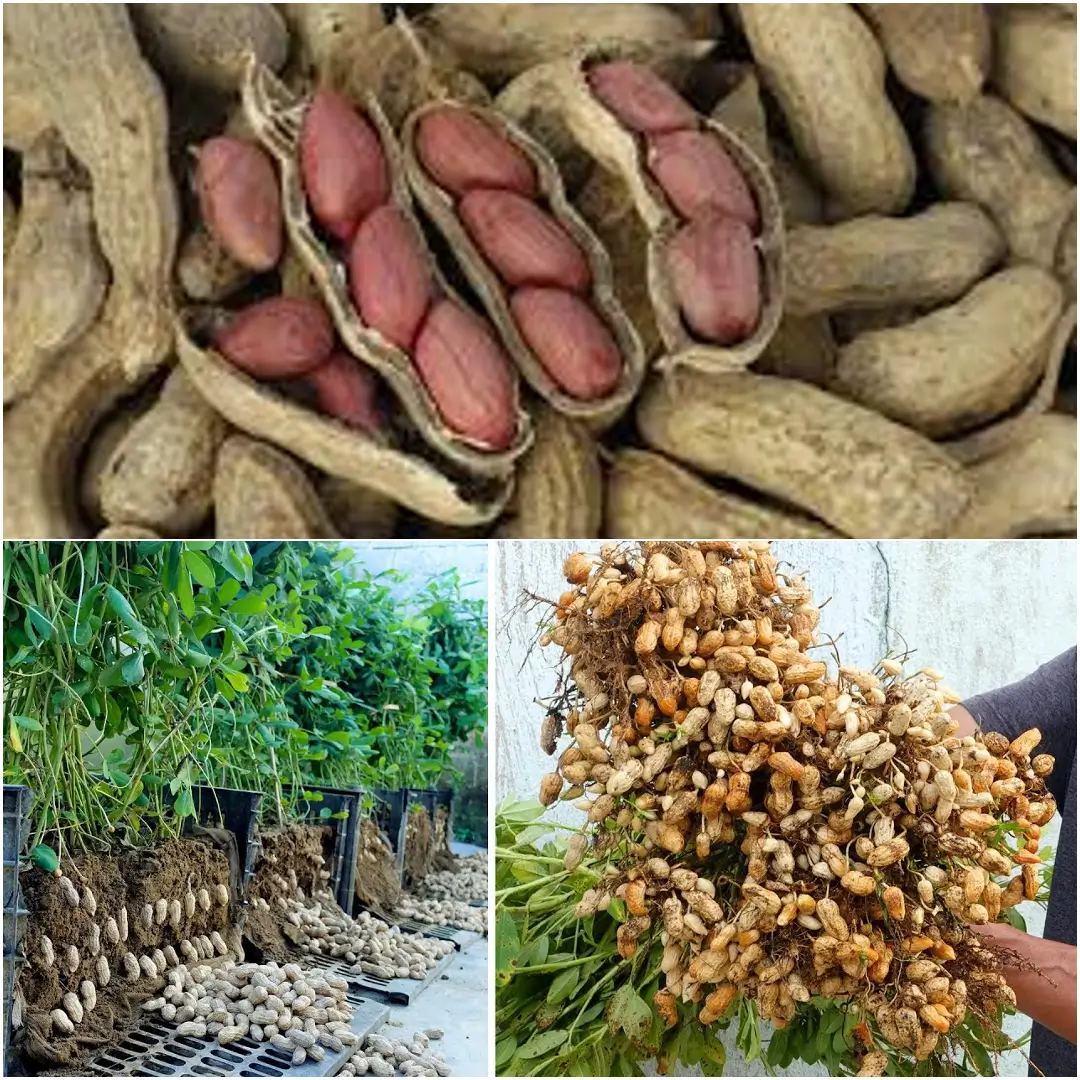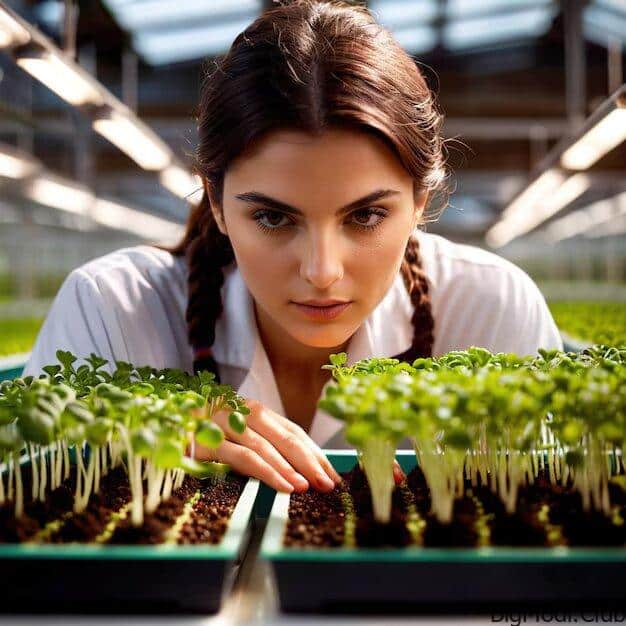Growing peanuts might seem like a challenge, especially if you’re new to gardening or live in a cooler climate. However, with the right planting conditions, care, and a little patience, you can successfully grow this unique plant at home. Whether you’re interested in adding peanuts to your vegetable garden or you simply want to try something new, this guide covers everything you need to know about growing peanuts from planting to harvest.
How to Grow Peanuts: A Step-by-Step Guide
Understanding the Peanut Plant
What Are Peanuts?
Peanuts (Arachis hypogaea) are technically not nuts, but legumes. They belong to the same family as beans and peas. Despite their origins in South America, they have become popular crops in many countries, especially in regions with warmer climates. Peanuts are also known for their unique underground growth process, often referred to as “pegging.”
Peanut Plant Characteristics
Peanut plants grow close to the ground and have delicate yellow flowers. One of the most fascinating traits of peanut plants is their ability to “peg” their flowers into the soil, where the pods (peanuts) develop underground.
Ideal Planting Conditions for Peanuts
Soil Requirements
Peanuts thrive in well-drained, slightly acidic soil. It’s essential to avoid heavy clay soils, as they retain too much moisture, leading to poor drainage. If you have clay soil, consider mixing in compost or horticultural grit to improve the texture.
Temperature and Climate
Peanuts require a warm climate with temperatures above 21°C (70°F). They need between 120 and 150 frost-free days to grow properly. In cooler climates, peanuts are best grown indoors or in a greenhouse where the temperature can be controlled.
Choosing the Right Time to Plant
Planting Season
The best time to plant peanut seeds is in late spring or early summer, after the risk of frost has passed. For those who want to start earlier, you can begin planting indoors in pots as early as March.
Growing Indoors vs. Outdoors
If you live in a colder climate, growing peanuts indoors in containers or a greenhouse is a great alternative. Warmer regions, however, can grow peanuts directly in the ground.
How to Select and Prepare Seeds
Seed Selection
Use only raw, unshelled peanuts for planting. Roasted or boiled peanuts won’t germinate. The seeds should be plump and healthy, as this increases the chances of a successful crop.
Preparing the Seeds for Planting
To prepare your seeds, remove them from their shells, but be careful not to damage the peanut itself. Soaking the seeds overnight can speed up germination.
Planting Peanuts in the Ground or Containers
Planting Depth and Spacing
Sow peanut seeds 3-5 cm deep, ensuring each seed is spaced 30-45 cm apart. This spacing allows for the pegging process, where the plant’s flowers push into the soil to grow the peanuts.
Growing in Containers
If space is limited, or if you prefer growing peanuts in containers, choose pots that are at least 45 cm deep and wide. This ensures there is enough room for both the plant’s root system and the pegging process.
Watering and Mulching
Proper Watering Techniques
Peanuts need a steady supply of water, especially during the growing season. Keep the soil evenly moist, but avoid waterlogging, which can lead to rotting.
The Importance of Mulching
Mulching around the base of peanut plants helps to retain soil moisture, supports the pegging process, and prevents weeds from taking over.
Fertilizing and Maintaining Peanut Plants
Nitrogen Fixation
Peanut plants can fix nitrogen in the soil, so they don’t need heavy fertilization. However, you can apply a balanced fertilizer when planting to give them a boost in nutrients.
Weed Control
Regular weeding is essential to prevent competition for nutrients and water. Make sure to weed carefully around the base of the peanut plants to avoid damaging the delicate roots.
Supporting the Pegging Process
What is Pegging?
Pegging is the process where the peanut plant’s flowers are pushed into the soil to develop peanuts. This underground growth is what sets peanuts apart from many other crops.
Helping the Pegging Process
You can support pegging by mulching around the plants and ensuring the soil stays moist but not overly wet.
Harvesting Peanuts
When to Harvest
Peanuts are ready to harvest 120-150 days after planting, when the plant’s leaves have turned yellow and the foliage has wilted.
How to Harvest Peanuts
Carefully dig up the entire plant, shaking off excess soil. Lay the plant in a warm, dry area to dry for about two weeks.
Post-Harvest Curing and Storage
Curing Peanuts
After harvesting, peanuts need to be cured by air-drying them for another two weeks. This helps to preserve their flavor and makes them suitable for long-term storage.
Storing for Future Use
Store peanuts in a cool, dry place. You can save some of the harvest for planting the following season.
Propagating Peanut Plants
How to Save Seeds for Next Year
After harvesting, select some of the healthiest peanuts to save for planting next year. Make sure they are completely dried before storing.
Best Storage Practices
Store your saved seeds in a dry, dark place, such as a garden shed, and use them for planting the next season.
Common Pests and Diseases
Pest Control Methods
Peanut plants are relatively resistant to pests, but you may encounter aphids or spider mites. Natural predators like ladybirds can help control aphids, while misting the plant can help prevent spider mites.
Identifying and Treating Diseases
Fungal leaf spots and other diseases can occur if the plants are overwatered or exposed to poor air circulation. Ensure proper drainage and avoid overhead watering to prevent fungal infections.
Indoor vs. Outdoor Growing Considerations
Benefits of Growing Indoors
Growing peanuts indoors provides more control over temperature and weather conditions, reducing the risks of frost and pest damage.
Challenges of Growing Outdoors
Outdoor growing is more dependent on the climate, and in cooler regions, it can be challenging to achieve the long growing season peanuts need.
FAQs:
Can peanuts grow in colder climates?
Yes, but it’s best to grow them indoors or in a greenhouse if you live in a colder region.
How long does it take for peanuts to grow?
Peanuts take 120-150 days to mature, depending on the climate and growing conditions.
What type of soil is best for growing peanuts?
Peanuts thrive in well-drained, slightly acidic soil. Avoid heavy clay soils that retain too much moisture.
Can I plant roasted peanuts?
No, roasted or boiled peanuts won’t germinate. Always use raw, unshelled peanuts for planting.
How do I know when to harvest my peanuts?
Peanuts are ready for harvest when the plant’s leaves turn yellow and wilt, usually 120-150 days after planting.


